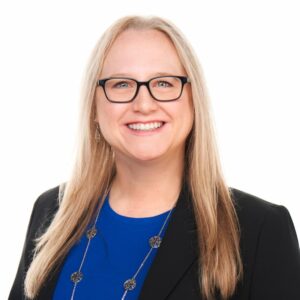As a senior living operator, you may often find yourself going “back to the drawing board” to find new strategies and to understand your sales cycle.
We get it. Because every resident is unique, you might find it challenging to see patterns in your marketing strategies so you can eventually scale up tours and occupancy. This is why understanding not only senior living marketing funnels — but also alternative models — comes in handy for your marketing plans.
Senior living marketing agency Craft & Communicate is here to guide your team through all three.
The Three Marketing Growth Models
Typically, marketing growth models are shown as a funnel, hourglass, or flywheel shape. Depending on your sales cycle, you may need each of these examples to help you when it comes to envisioning your sales strategy.

The Traditional Senior Living Marketing Funnel
A traditional marketing funnel in senior living represents the journey from Awareness to Decision. This is used to identify and nurture leads, from adult children or seniors researching communities.
You’ll tend to find that campaigns focus heavily on lead generation (e.g., digital ads, brochures, tours). However, the journey might stop after a resident moves in, with little marketing support afterward.
- The Awareness stage is the widest stage, bringing in the most leads at the top. An example of this stage would be your ads getting shown on a Google search results page.
- As time goes on and some leads opt-out, the funnel narrows into the Interest category. A potential lead could show interest by clicking on that ad and heading to your website.
- From there, that person would step into the Intent category by filling out an online form or a chat on your website and taking a tour. At this point, we would officially call them a lead.
- Finally, at the smallest section of the funnel, the Decision point, that senior or one of their family members has signed a lease agreement. Congratulations; you have a new resident!
Think: How can I bring in more leads?
This type of marketing growth model, focused heavily on lead generation and resident acquisition, is excellent when thinking about the steps leading up to a new move-in, but it leaves out a few key details.
Flywheel Marketing for Seniors and Families
What happens after the move-in? How can we improve upon our service so that they’re not only happy residents, but also grateful families who advocate for us to their friends?
This is where flywheel marketing comes in.
With the flywheel model, we’re seeing a cyclical approach where marketing, sales, and service feed momentum. Resident satisfaction and engagement fuel your growth, so you are heavily reliant upon positive reviews, resident testimonials, and referrals instead of wide-reaching direct marketing.
You don’t want to just attract new move-ins; you want people so happy that they can’t help but talk about you to everyone they know.
These three stages, centered around each resident and their family members, are:
- Attract: “I’m interested in your community.”
- Engage: “I’ve moved in.”
- Delight: “I’m a happy customer who will sing your praises to my friends!”
Because this model is highly dependent on your residents becoming enthusiastic about your services, every member on your team — from the ED to the housekeeper — will need to have the residents’ satisfaction in mind with every single interaction.
That’s why the flywheel is presented as a continuous loop with no endpoint.
You’ll want to routinely ask for feedback in order to address any concerns before they result in a negative outlook.
Here’s how to build a strong flywheel marketing strategy:
- Create smooth move-in transitions.
- Is the paperwork painless and easy to navigate?
- Is your whole team ready on move-in day?
- Do you have resident ambassadors ready to help them acclimate?
- Establish great communication.
- Do you have reminders scheduled to follow up consistently?
- Have you answered every question, including the ones they haven’t asked yet?
- Are you being proactive with the family members in keeping them posted on your resident’s progress?
- Provide standout service.
- Have you tasted your community’s food lately?
- What do the bathrooms look like?
- Are you really listening to resident feedback?
Think: How can I deliver such great service that my residents are my marketers?
The Marketing Hourglass in Senior Living
The hourglass marketing model focuses on the entire resident journey, not just the steps that lead to a sign-on. With the marketing hourglass, we’re leaning into resident retention and referrals.
By stressing the importance of ongoing resident engagement, we can improve upon the experience of those we serve, which may lead to new word-of-mouth leads — often, the best kinds of leads!
Hourglass marketing exists in seven steps:
- Awareness: “I’ve searched for ‘memory care near me’ and saw your ad.”
- Consideration: “I visited your website and reached out via chat to schedule a tour.”
- Decision: “I’d like to sign a lease.”
- Move-In: “I’m moving mom in on the 15th.”
- Satisfaction: “Mom has been settling into your community quite nicely.”
- Loyalty: “It’s time to renew our lease, and we will stay.”
- Referrals: “I’m telling all my friends about your community!”
In a traditional funnel vs. marketing hourglass scenario, the marketing hourglass fits well because we’re taking into account the entire resident experience, both before and after the move-in.
Resident move-ins, family communication, and quality-of-life programming are crucial to succeeding here, which puts you on the same side as the resident and family. They often refer others, too.
Think: How can I bring in the most leads while turning them into happy residents that bring in referrals?
Funnel vs. Flywheel Marketing and the Marketing Hourglass
Comparing funnel and flywheel marketing, the funnel goes into much more detail than the high-level summary of the flywheel. However, hourglass marketing contains the entire resident pathway, which can illuminate opportunities for growth in your community.

Which Senior Living Marketing Funnel Should I Choose?
Ideally, all three have a place depending on the strategy:
- Use the funnel to drive leads and tours.
- Use the hourglass to extend value through resident move-ins and family communication.
- Use the flywheel to build a culture of continuous engagement, minimize friction, and let happy residents and families propel future growth.
Let’s Find the Perfect Fit for Your Community
Focused on filling your senior apartments while creating long-term enthusiasm and momentum? Contact us today; let’s chat!


